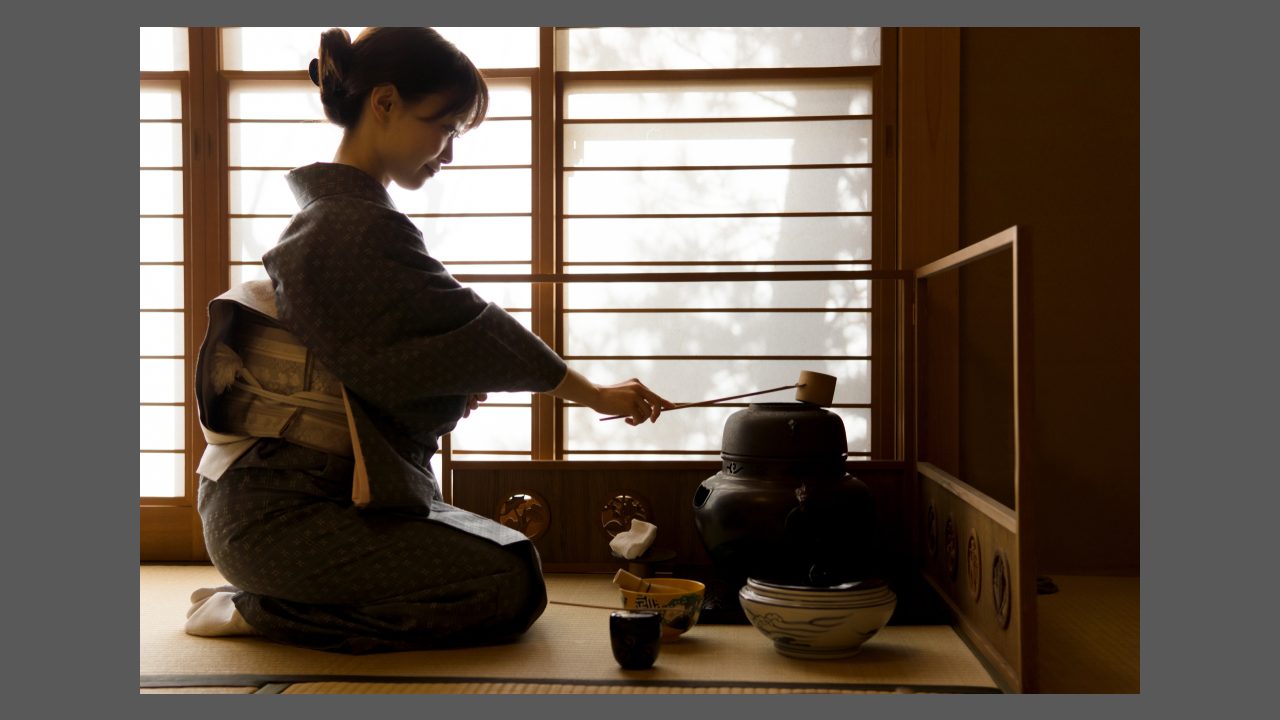Sado, the Japanese tea ceremony
Have you ever experienced a Japanese tea ceremony? The most notable feature is its beauty of style. In a nutshell, it’s just a ceremony where a host makes matcha green tea and guests drink it. What makes the ceremony unique is it prescribes every single move of making and drinking tea. As far as I know, it already started in the 15th century; a major merchant developed the basic style in the 16th century. I’ve not yet experienced it but am so amazed by the creativity of the merchant. Let me reiterate: It’s just making and drinking tea. The merchant must be a genius to raise such a daily routine up to a stylized ceremony. For example, I have munchies very often but have never thought to stylize snacking.
The origin of mindfulness
The Japanese tea ceremony is always associated with Zen Spirit. These days, Zen Spirit seems to get popular as the origin of “mindfulness” especially in Silicon Valley. In fact, it’s very difficult to explain what Zen Spirit is. Let me exemplify its essence. Suppose there’s one big rock in a garden, appearing old, dark, and rugged. People may think it’s dirty and hope it would be removed from the garden. On the other hand, Zen Spirit sees things as they are, and doesn’t make a judgement. From the view point of Zen Spirit, the rock is just covered in moss and black mold by being exposed to the weather for the long period of time. It’s like a quiet, objective view and inquiring mind for the nature of things.

See something in nothing
Although it may sound contradictory to the above mentioned objective stance, imagination to see something in nothing is another feature, I guess. Let me tell you a very famous story expressing Zen Spirit. One day, the then Shogun visited the above merchant’s garden, hearing morning glories are reaching peak bloom, and expecting to see all the flowers were mown off. The Shogun, with his anger, went into the tea ceremony cabin in the garden, and found a morning glory put in a vase for him. The Shogun was impressed because he noticed the field of morning glories in his imagination stirred up by the single flower was much more beautiful. In the same logic, Zen Spirit will make you see more beauty in our simple furniture, I hope.

Shungo Ijima
He is travelling around the world. His passion is to explain Japan to the world, from the unique viewpoint accumulated through his career: overseas posting, MBA holder, former official of the Ministry of Finance.
Photo Credit: https://www.tokyoweekender.com/2020/01/zen-and-the-art-of-the-japanese-tea-ceremony/

